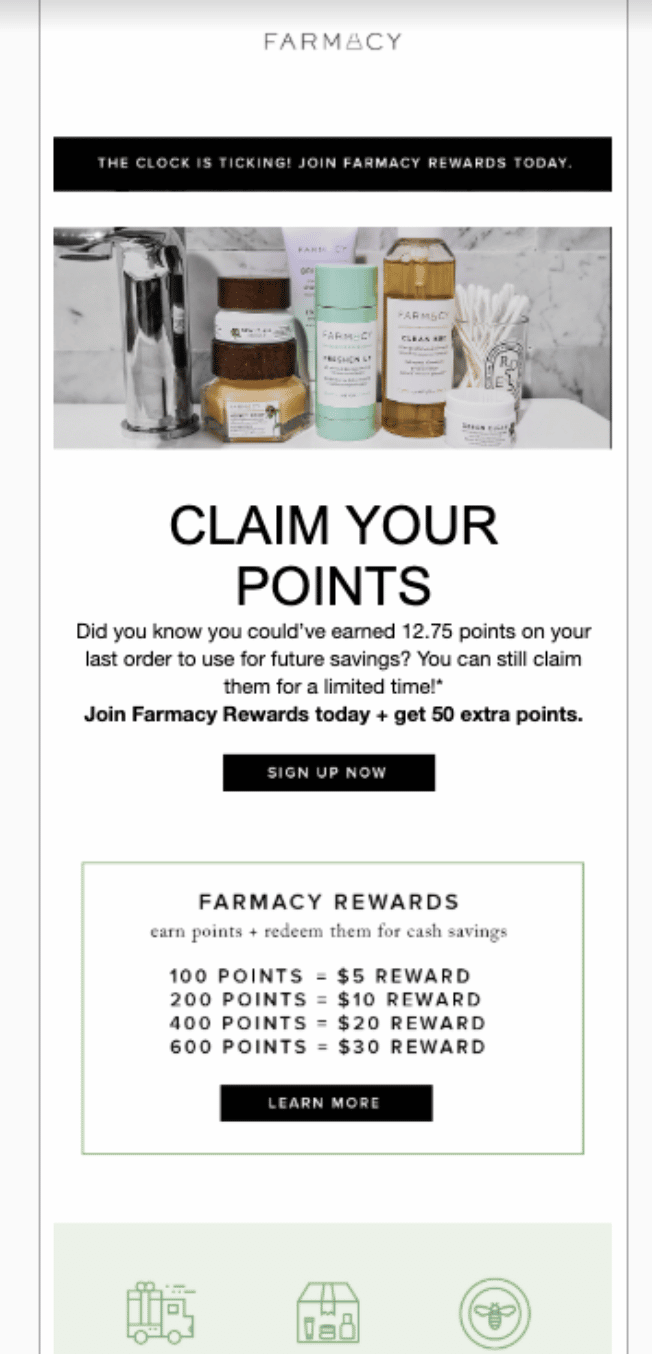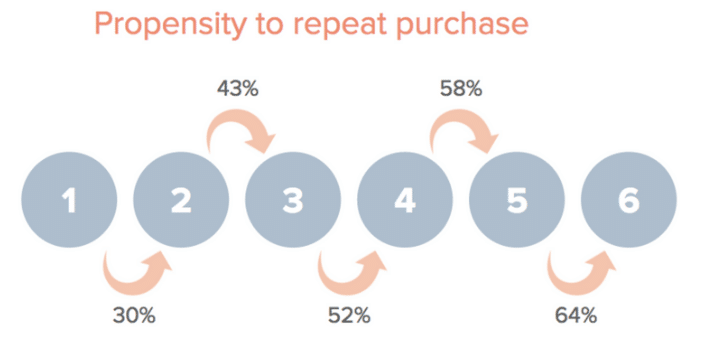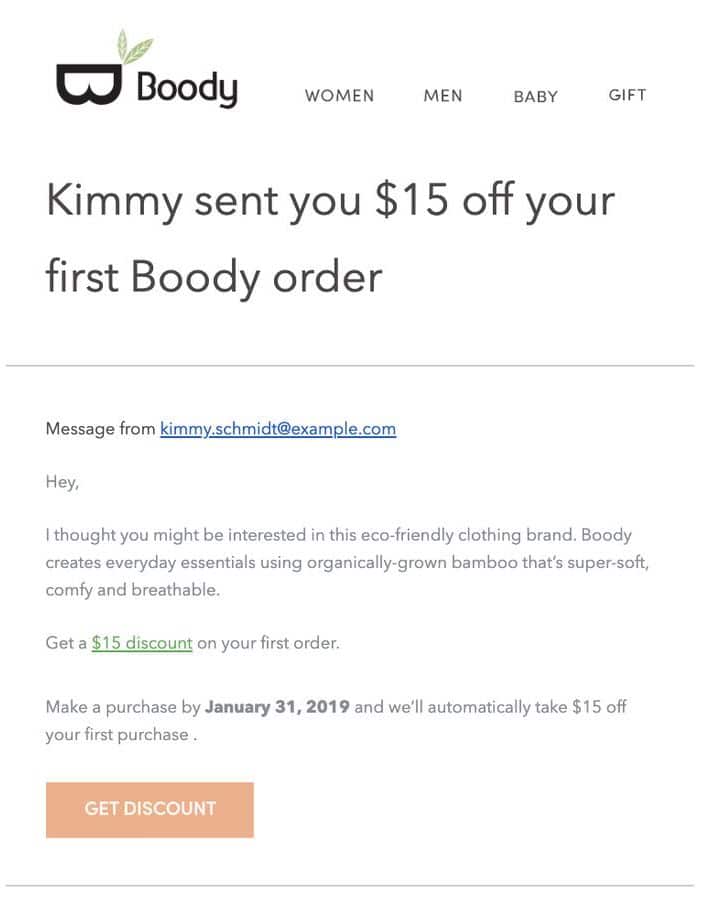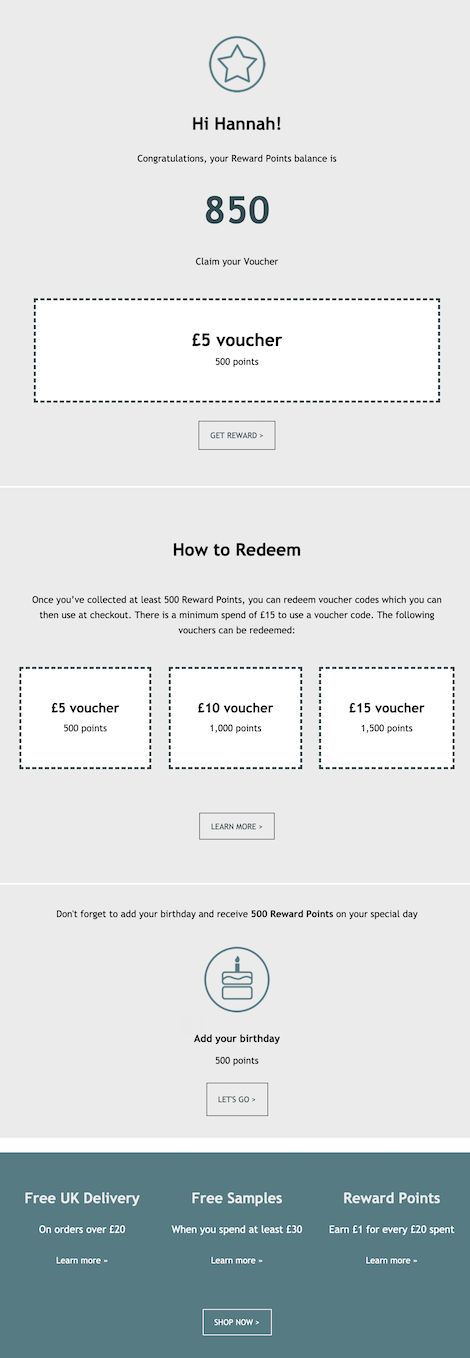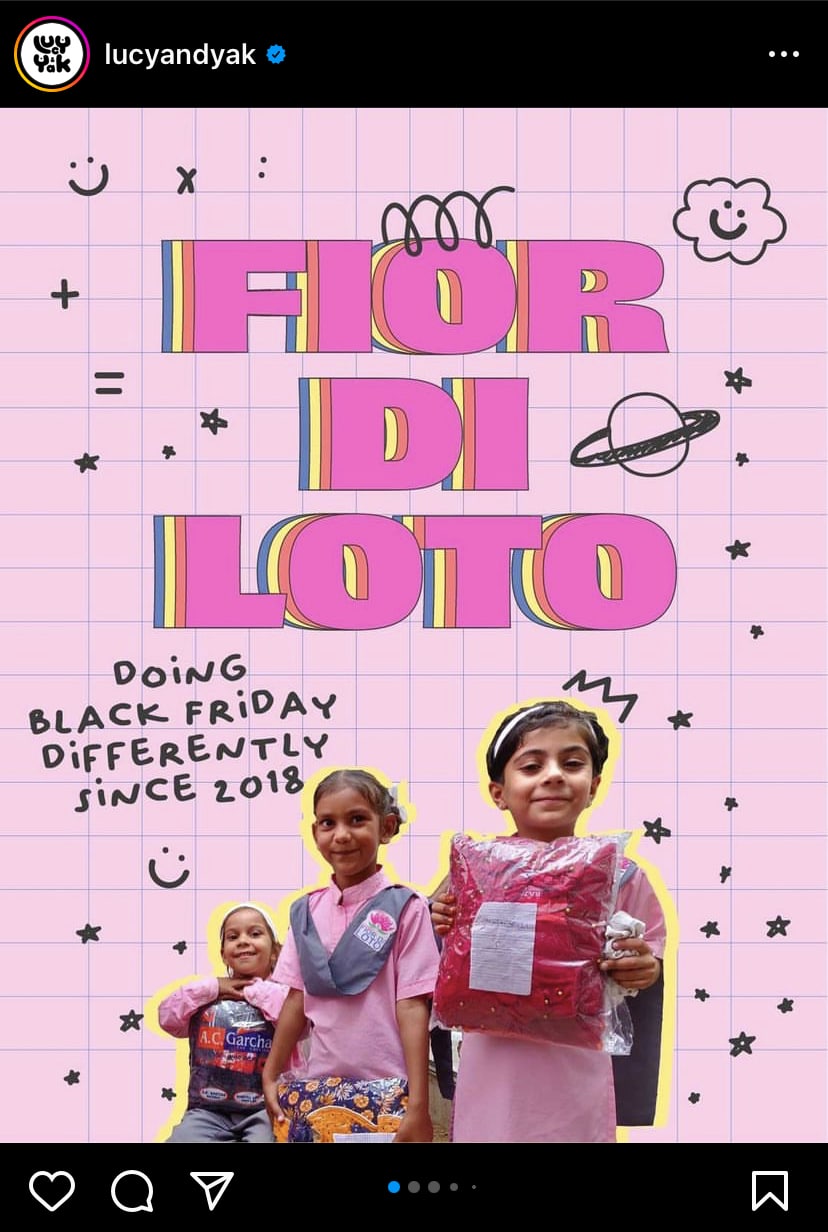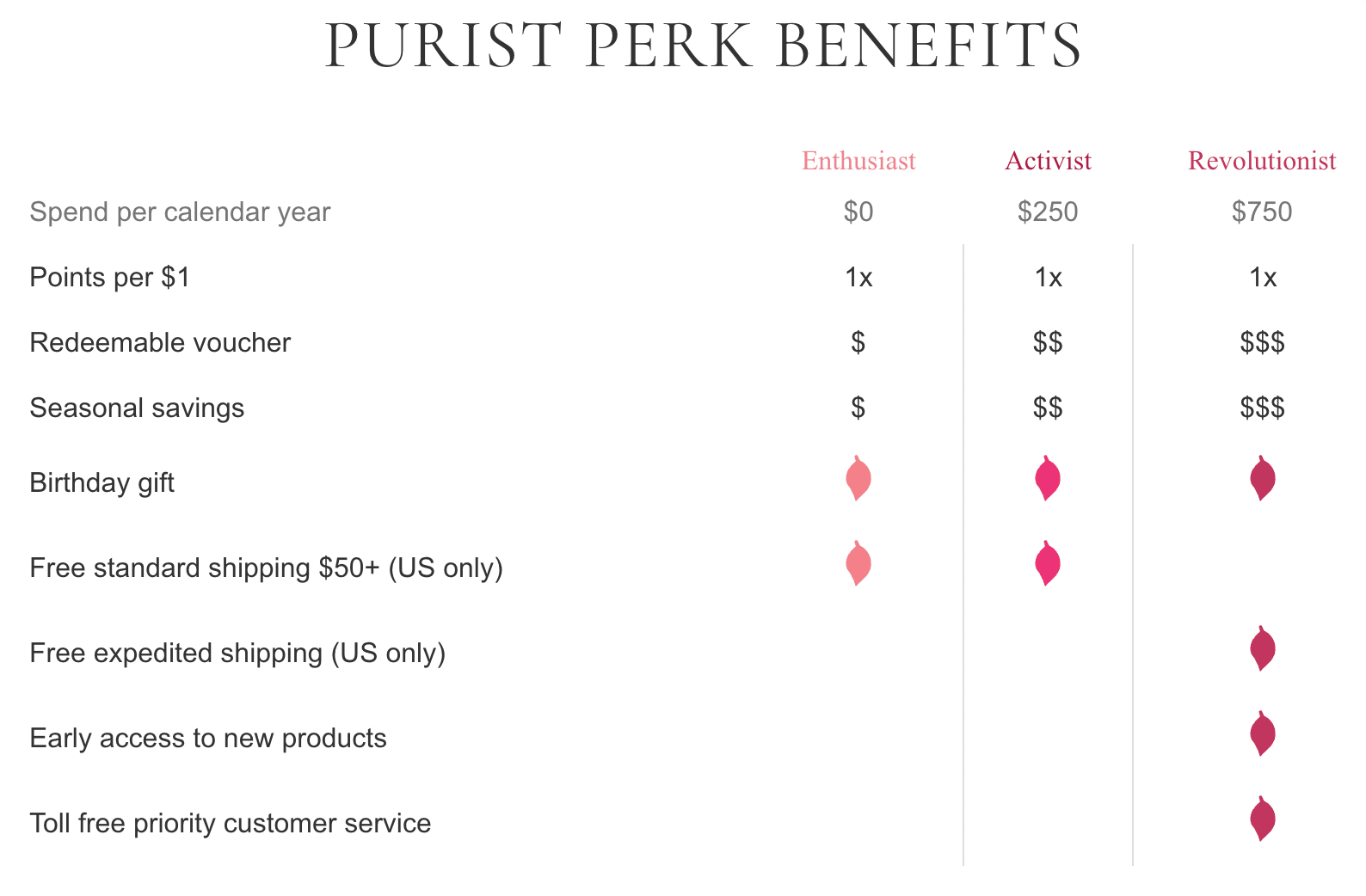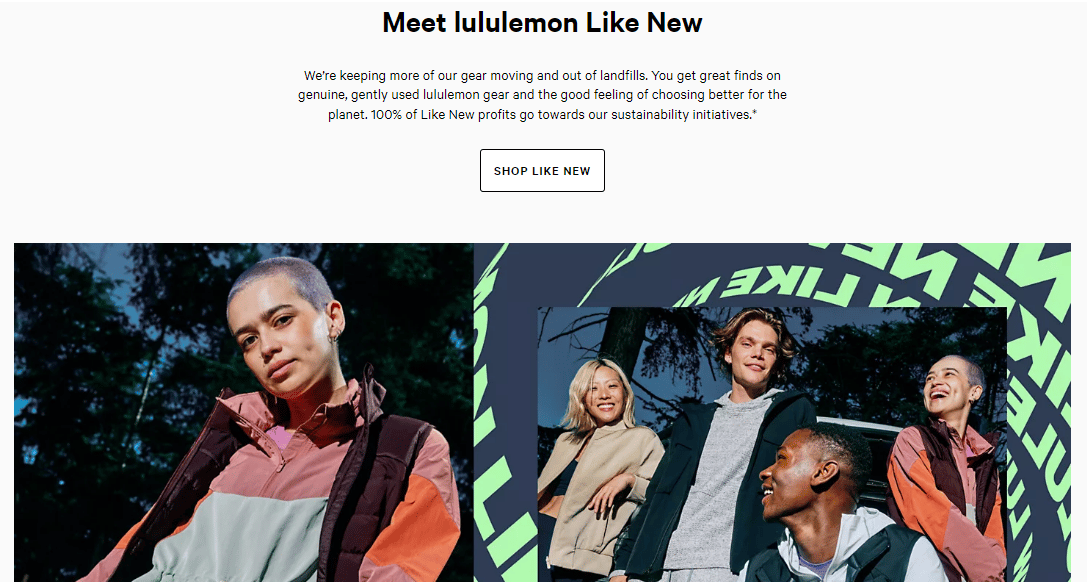It’s a turbulent time in ecommerce. With increasing acquisition costs, fierce competition, and a rapidly evolving privacy-landscape, customer loyalty has never been more important.
During this period of change, you should be focussing on your most profitable shoppers – your existing customers – as they are the key to your sustainable business growth.
This blog will highlight four reasons it’s important to focus on customer retention, and four simple tactics you can adopt to build loyalty among your customers.
Customer acquisition is expensive (especially during the holidays)
Customer acquisition is an expensive exercise. It can cost five times more to attract a new customer than retain an existing one. Money spent on marketing channels to grab the attention of new customers is often better spent improving the experience of your existing customers.
Shoppers acquired during the peak season are expensive because you’ve spent more marketing budget trying to stand out from the crowd. This is also true for customers acquired during a sale, because your profit has already decreased on discounted items.
You can offset these costs by working on methods that increase the repeat purchase rate, Average Order Value (AOV), and Customer Lifetime Value (CLTV) of these new shoppers.
Setting up a loyalty program allows you to reward shoppers with loyalty points for completing on-site activities, such as leaving a review or getting involved with your community. With points in their account and opportunities to use those points on exciting or valuable experiences, your new customers will want to return to your brand and spend again.
During the holidays, businesses should focus on retention rather than acquisition to ensure that costs are low and that your most valuable customers are rewarded.
80% of your revenue comes from 20% of your customers
If you’re looking to boost revenue and grow your brand, it’s important to focus on the top 20% of your customers. This segment purchases more frequently, talks about your brand more, and is more likely to engage with your loyalty or community programs. The bigger you can make this pool of people, the stronger your revenue and profit will be.
One of the steps merchants can take to boost their percentage of valuable customers is to send emails to customers who haven’t signed up to their loyalty program yet. These emails should tell them about the points they’re missing out on by not becoming a member.
Farmacy Beauty, a sustainable beauty brand, has done just that. As you can see below, Farmacy Beauty offers their customers the opportunity to “Claim Your Points”. In the same email, they illustrate the rewards you can get in return for those points. It’s a simple and effective tool that encourages loyalty to your brand and builds your proportion of valuable customers.
Source: Farmacy’s points reminder email
The likelihood of a customer repeat purchasing increases as they purchase
The likelihood of customers repeat purchasing increases after every purchase. After a customer repeat purchases once, the chances of them coming back for a third purchase jumps to 43%. And this continues to rise as they return to shop with you.
As customers become more attached to your brand and know, from experience, that your products are of a great quality they will be more inclined to shop with you in the future.
Source: Ometria
Therefore, it’s essential to entice new customers to return for a second purchase. There are a number of ways to do this, but one of the most reliable methods is to offer incentives for repeat purchases.
Focus on retention at this point in the customer journey by reaching out to first purchasers with a valuable incentive to get them to make a second purchase, such as a free product, free shipping, a discount code, or a money-off voucher.
Incentives like free shipping and discounts are a tried and tested method that will lead to high retention rates. For example, 45% of consumers made one to three purchases because of incentives in the past year.
Consumers are responsive to these kinds of retail tactics because they are able to get a great deal without making a large commitment. For ecommerce businesses, incentives are a fantastic way to make the most of this repeat purchase trend.
Loyal customers refer their friends
People are more likely to buy from a business when they’ve been referred by a friend. In fact, research shows that 83% of satisfied customers are willing to refer a brand.
Evidently, loyal customers are well positioned to spread your brand’s message and often willing to do so. Retailers can significantly benefit from tapping into this loyalty trend.
As you head into 2023, use your loyal customers to grow your customer base by setting up a referral program. With a referral program, you can incentivize more referrals with loyalty points, money-off, or discounts. You can even reward both the referrer and referee for maximum effect.
Boody, a bamboo clothing brand, has a referral scheme that allows referred customers to receive $15 off their first Boody order.
In their succinct referral message Boody are able to convey that they are an “eco-friendly clothing brand” and they are able to entice new customers in with a substantial discount. In addition, the referral comes from someone they trust and this in turn instantly creates a level of trust between Boody and the newly referred customer.
Source: Boody’s referral email
By rewarding your loyal customers for being advocates, you’ll acquire more customers who are more likely to convert. And you will be able to acquire these new customers, all at a fraction of the cost of classic acquisition channels.
5 Tactics to build customer loyalty
There are a few simple tactics to help build customer loyalty in a way that is sustainable and achievable in the current retail landscape.
1) Exclusivity and VIP treatment
Building customer loyalty is about more than points and rewards, it’s about making customers feel special. You should implement a program that offers a VIP experience that will drive customers to return and engage more.
79% of customers will be loyal to a brand if they can unlock exclusive benefits. So any strategy based around customer retention should include some exclusive and VIP experiences that will in turn foster loyalty and help to boost revenues.
Brands like Astrid and Miyu and Never Fully Dressed created exclusivity by giving their loyalty program members early access to their sales before anyone else. By showing their most loved customers they’re special, these brands have boosted their customer retention.
Source: Never Fully Dressed’s email promoting exclusive offer
2) Bonuses and free gifts
During peak and holiday periods, shoppers are motivated by discounts and money-off. However, the short-term satisfaction of low prices means they won’t be motivated to return to you when your prices return to normal.
To overcome this hurdle, use the peak periods to reward your customers with more value through your loyalty program. For example, crafting brand Darn Good Yarn used a double points loyalty promotion to encourage members to purchase over a holiday weekend.
Source: Darn Good Yarn’s email promoting exclusive offer
Bonuses and free gifts should not be deployed at random, they should serve a purpose in a larger loyalty strategy and provide a boost during lean periods.
3) Re-engagement emails
Another tactic to increase customer loyalty is to make the most of your emails. It costs five times less to retain a customer than it does to acquire a new one. This number is even more extreme over the peak, which emphasizes the value of pursuing customer retention over acquisition.
Bath & Unwind realized that focusing on their existing customers would be more profitable than trying to attract new customers who are less likely to make a second purchase. To remind shoppers they were there, Bath & Unwind sent their loyalty program members “reward available” reminder emails ahead of the peak.
In these re-engagement emails, as Bath & Unwind did, you can show shoppers their points balance and the tier they’re in. By sending these ahead of the sales, brands can remind customers they have points, show them how to spend their points, and incentivize loyalty to the brand.
Source: Bath & Unwind’s points balance email
4) Charity and brand alignment
Today, one of the best ways to build customer loyalty is to connect on a human level.
Over the last few years, numerous brands have rushed to show shoppers (old and new) that they were aligned in more ways than one. For example, the ethical fashion brand Lucy & Yak sent emails educating shoppers all about their #YakSchoolRun initiative. They told customers that they wanted to, “do Black Friday differently”. Instead of slashing prices, the brand pledged to donate 10% of all BFCM sales to Fior Di Loto, a charity that helps young girls access a good education.
Source: Lucy and Yak’s Instagram account
Every brand will be able to approach this idea of brand alignment differently. All brands looking to build customer loyalty will find it easier to succeed if they have a coherent set of values that they consistently and visibly strive to uphold.
5) Shipping and returns benefits
There’s no denying that people love free shipping. And while you might not be able to offer this across the board, you can certainly implement this perk and use it to your advantage by offering it to specific customer segments – like your most loyal customers. One way to do this is to work your shipping benefits into your loyalty tiers so that when customers work their way through the tiers they earn the free or discounted shipping perk.
By offering free shipping to only your most loyal customers you’re continuing to build that positive emotional relationship, while also making it more desirable for other customers to carry out whatever actions are needed to move up a tier. In the example below from 100% Pure, once people reach the Revolutionist tier, they qualify for free expedited shipping. But to reach this tier, they need to have spent $750. Therefore, you are only rewarding your customers with the highest lifetime value.
Source: 100% Pure
Brands can also take a personalized approach to returns by offering a variety of refund options based on the CLTV of their shoppers. Like the previous example, you can offer your most loyal, repeat customers a VIP returns experience (such as free return pick ups), while your one-off shoppers get the most basic return option. Again, you can use your loyalty program tiers to reward your top tier members with the best returns options, encouraging your smaller spenders to carry out the actions needed to reach this level.
Alternatively, you could think of innovative and engaging ways to help your customers get rid of unwanted items themselves without returning them at all. LuluLemon, for example, encourages their customers to trade in their old sports clothes to a local store so that they can be spruced up and sold on to someone else. In return for doing this, the customer then receives credit to spend in store. It’s a win-win for everyone, as brand loyalty grows when shoppers cash in on items they don’t want (a very unique perk), and LuluLemon benefits from increased customer retention on top of the original sale!
Source: Lululemon website
Focus on retention over acquisition
External and economic factors have made it more important than ever to invest in customer loyalty. Although the eCommerce space is facing some challenges right now, there is a huge opportunity to build loyalty amongst your new and existing customers. Brands are succeeding by cultivating a sense of exclusivity, offering enticing rewards, proactively sending re-engagement emails, and displaying their values in the actions they take.
Use the tactics listed above to get the most from your holiday shoppers and newly acquired customers. This will help you drive success long after the holidays have ended.


